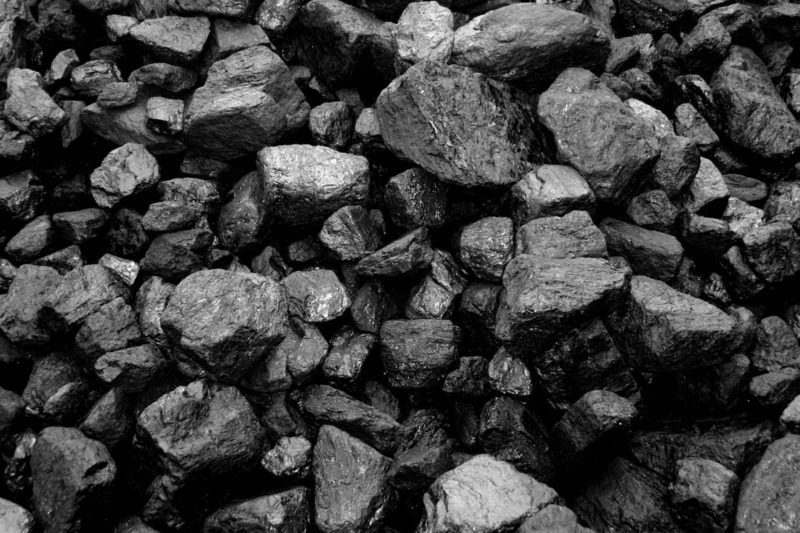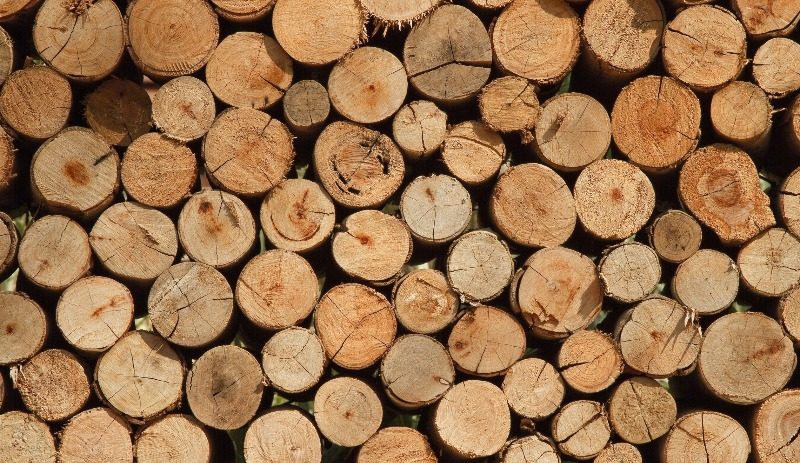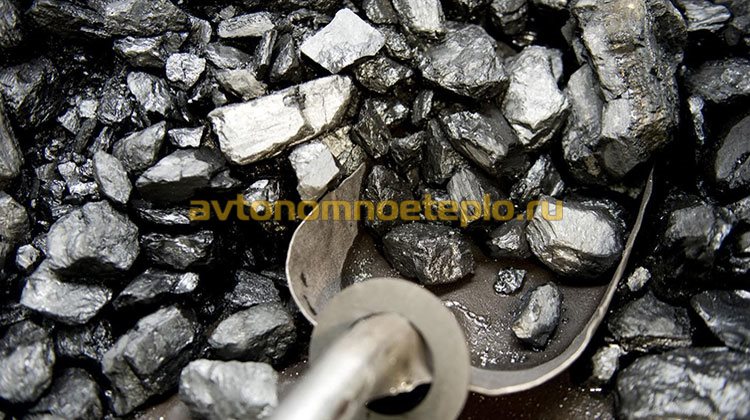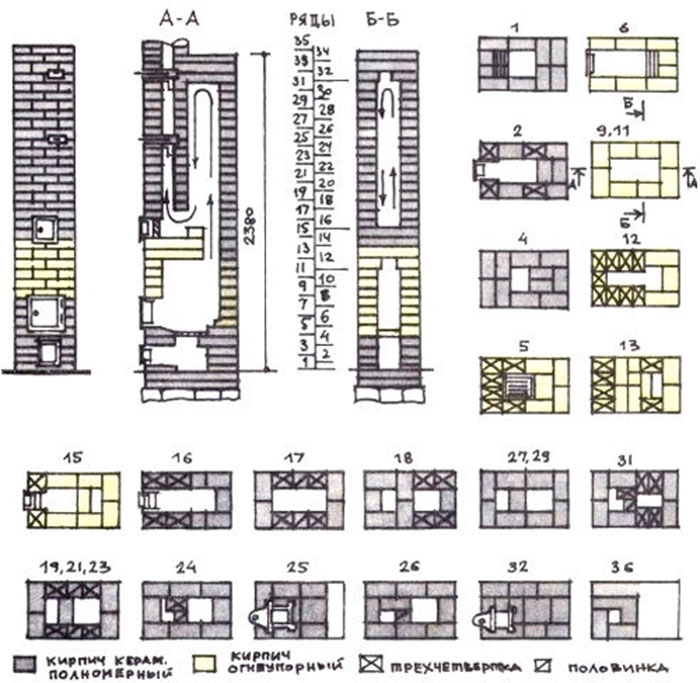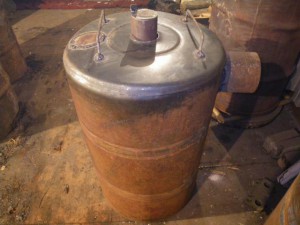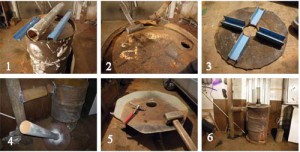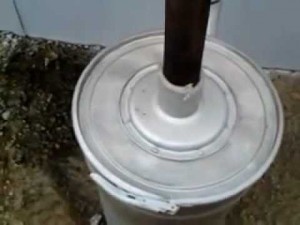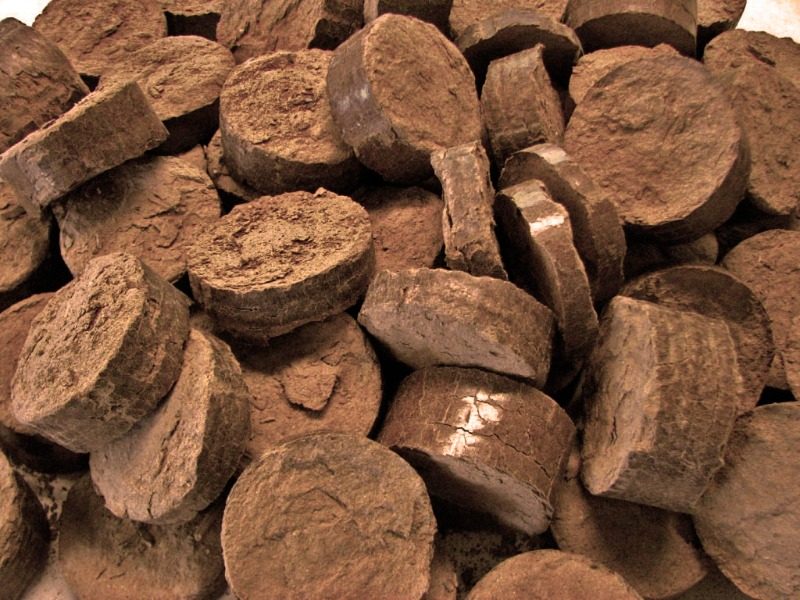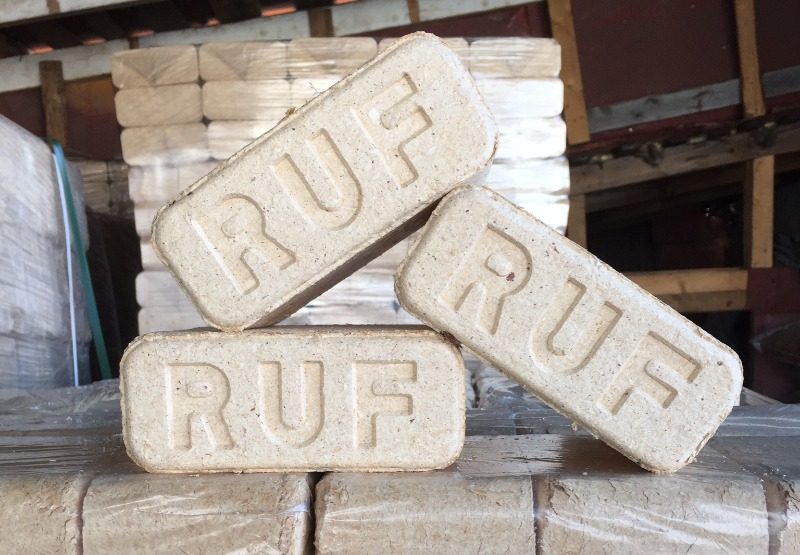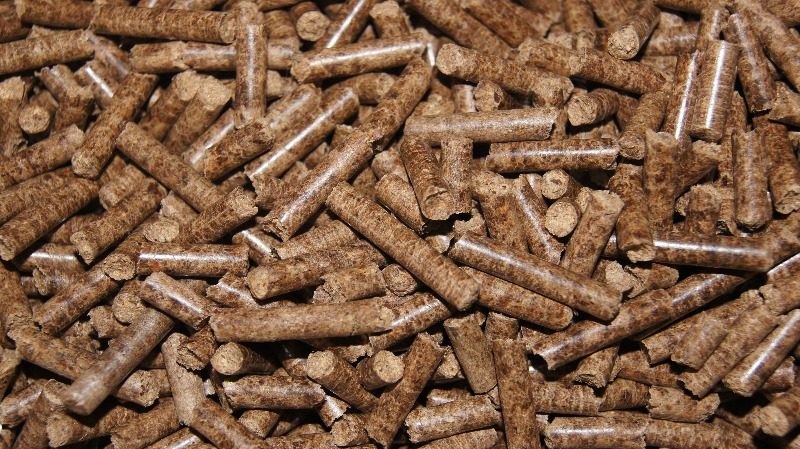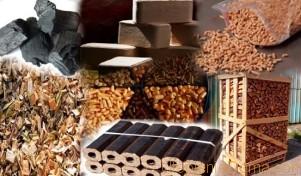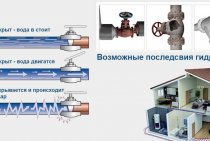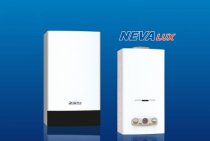Features of the design of coal furnaces
If you look closely at a coal stove and its most common wood-burning competitor, then in principle it will be difficult to find any special differences at first glance. But with a closer examination and familiarization with the principle of operation of the furnace itself, it becomes clear that they differ fundamentally. (See also: Do-it-yourself housekeeper oven)
- The principle of combustion and air supply differs, if for wood-burning stoves the most efficient combustion can be achieved when air is supplied directly to the place of combustion of the fuel from above, then for coal-fired stoves it is necessary to purge the fuel and supply the air mixture from below.
For wood-burning stoves, the use of dry fuel in the heating process is not particularly critical. It is only important that the initial kindling of the furnace occurs with dry material. It is desirable to preheat coal before adding it to the crucible in a special section of the furnace, which is heated by flue gases.

The design of the chimney for a coal stove is somewhat different from wood-fired counterparts and is designed for a higher air flow rate. And the flow itself and its speed are not regulated by a yushka, but with the help of a blower. The damper itself, which blocks the chimney (yushka), is completely absent. This feature is due to the fact that coal stoves smolder for a very long time, and do not quickly burn through the fuel like wood stoves. The disadvantages of coal stoves are also associated with this feature:
- it is impossible to block the chimney by preventing the weathering of heat due to the danger of being poisoned by carbon monoxide, and therefore coal heating stoves cool down rather quickly.
- For normal combustion of a coal stove in its lower compartment, it is desirable to exclude the presence of combustion products. To do this, it is necessary to periodically clean the blower, which will be constantly replenished with burnt coal. In this case, cleaning should take place more frequently than is necessary for a wood-burning stove.
The walls of coal stoves must withstand higher temperatures than conventional wood-burning ones, so they will be thicker, and more heat-resistant materials must be used to build them.
(See also: Do-it-yourself camp stove)
A coal stove may have a special fuel loading design, this is due to a higher ignition temperature of coal - that is, it will not be possible to flood such a stove only with a piece of newspaper and matches. Therefore, in a coal stove, firewood is first kindled, and coal is loaded from above, which gradually flares up as the firewood burns out.
In practice, combined stoves are often used, in which both coal and firewood can be burned at the same time. In addition, fuel can also be used as a fuel peat briquette, which by combustion is very similar to coal. In combined devices, all elements of both a coal and wood-burning stove are simultaneously present.

Coal
Coal is a traditional raw material for solid fuel boilers. It burns for a long time and has good heat dissipation, but only if it is properly placed in the furnace chamber, properly ignited and subsequently supported.
Choice of coal
In order to increase the efficiency of the boiler and extend its service life, it is necessary to take into account the manufacturer's recommendations for choosing the grade of coal. Usually the name of the brand and its fraction is indicated in the technical data sheet of the device. Each of the brands has a different ratio of carbon and impurities, different humidity, structure, strength and age of formation.
The most popular grades of coal for solid fuel boilers:
- Coal. The heat transfer of the fuel is 5500 kcal/kg. The average percentage of carbon and ash is 75%/3%. Suitable for ignition of most classic boiler models.
- Anthracite.Indicators of specific heat - 9000 kcal / hour. The percentage of carbon is not more than 7%. The disadvantage of the variety is the difficulty in ignition and the extremely high combustion temperature.
The most popular and convenient for ignition is coal of the long-flame category. This universal fuel for all types of boilers quickly ignites, burns for a long time and gives off a large amount of energy.
On sale you can find brown coal and lingite. However, these grades are only recommended for commercial use due to their high ash content and high humidity levels.
How to heat a boiler with coal
The solid fuel installation consists of two main chambers: the upper one is used for laying fuel, and the lower one (ash pan) is for collecting ash and slag. As the fuel burns in the main chamber, the combustion products gradually fall into the ash pan, from where they are removed manually.
Before starting melting, it is necessary to prepare the installation for operation. To do this, solid combustion products are removed from the ash pan, the walls of the combustion chamber are wiped and the chimney channels are cleaned.
As soon as the preparatory work is completed, you can start loading fuel and igniting.
- Put dry paper on the grill of the main chamber. It is recommended to crumple it beforehand - so it will light up faster.
- Lay chips evenly on top, brushwood - in the form of a well or a hut.
- Set fire to a match and bring it to the paper from different sides - the paper will evenly flare up, involving chips in the process.
- Close the firebox door, open the ash pan valve for oxygen to enter. At this stage, you will have to monitor the process of burning wood chips. You can adjust the intensity using the ash pan door (blower).
- As soon as the chips flare up completely, pour a small layer of fine coal fraction on top. Its quantity should not exceed a third of the combustion chamber.
- After loading the first batch of coal, close the door again to achieve the maximum combustion temperature. It usually takes about
- When the first layer of fuel completely covers the flame, add the remaining coal - up to the upper border of the door. It is preliminary recommended to slightly stir the burning coal.
- Close the door halfway. If there is a lot of smoke, leave a small gap.
As the fuel burns, small portions are added to the main chamber, each time closing the ash pan damper. A large amount of coal should not be laid at once - this will lead to solidification of the fuel on the grate and its premature deterioration.
Firewood
Wood is another popular type of fuel for boilers. Only dried wood is suitable for burning. Under-dried firewood in the firebox begins to release moisture, which accumulates on the inner surfaces of the firebox and chimney. In combination with smoke and carbon monoxide, tar is formed - it reduces the operational properties of the boiler and reduces the permeability of exhaust gases.
Firewood selection
For melting, hardwood with a long burning time and slow heat transfer is optimal. Deciduous trees should be preferred over conifers. Conifers in the process of combustion emit a large amount of tarry substances, quickly pollute the combustion chamber and heat exchanger.
According to the degree of hardness, wood species are divided into 3 categories:
- hard - white locust, ash, beech, oak, maple, yew, hazel, pear;
- medium hardness - walnut, alder, plane tree, birch, cherry, sweet cherry, cedar;
- soft - poplar, aspen.
How to heat a boiler with wood
- At the first stage, it is necessary to warm up the heating device well. This will prevent smoke from seeping into the room. Sheets of paper are laid at the bottom of the fuel chamber, on them are flammable birch bark, chips and splinter, and on top are logs of small dimensions (up to 15 cm in diameter). The space between the chips can be filled with paper for faster ignition.
- When the firebox is about half full, you should set fire to the paper and open the ash pan valve for better draft. Close the main chamber door.
- When the chamber and chimney warm up, and the preparatory bookmark begins to burn out, the firebox can be filled with large firewood. Logs can be laid out in a row or in the form of a well, leaving gaps between them for air to penetrate.
- As the firewood burns out, you will need to make a new bookmark, without waiting for the previous one to fade.
Long-burning boilers greatly simplify the work. The filling of fuel in them is carried out every 6 hours due to automatic regulation of traction and the combustion process. Melt such devices should be in accordance with the attached instructions.
How to calculate coal consumption
The consumption of coal in a solid fuel boiler depends on many factors. Costs are affected by:
- Heated area.
- The number of heat losses.
- Ambient temperature.
Exact costs can be calculated only after the end of the heating season. Moreover, depending on the winter, the average consumption of coal for heating can vary from 8 to 15 tons (for a building of 200 m²).
If you make average calculations, based on real operating experience, you can get the following data:
- The costs for September - October will be 1 bucket per day.
- Fuel consumption rates in a coal-fired boiler from November to February will increase to 10 buckets per day.
- In March and April, you will need to burn 1-2 buckets per day.
The calculation of coal consumption per 20 kW boiler, using the above data, will show that the costs during the heating season will be 580 buckets or 10-10.5 tons.
How to do it yourself
- The design of a brick oven running on coal or briquettes is quite simple, it is only necessary to observe two conditions:
the firebox must be made of refractory bricks;
the stove must be equipped with cleaning in all parts of the chimney.
The ordering scheme of the universal furnace is shown in the figure. Thanks to a simple device, you can do it yourself, even without experience. The stove has small dimensions, it can be used to heat a country or village house up to 36 square meters, consisting of one or two rooms. In the latter case, the firebox is located on the side of the kitchen, and the back wall, which heats up during the firebox, is taken out into the room.
The furnace consists of a do-it-yourself firebox made of refractory fireclay bricks and an over-furnace channel with one liner.
Flue gases are retained in the channel, a hood effect is created, and the furnace body is heated. After cooling, the smoke descends and exits through the hood into the chimney. It is equipped with two shutters, excluding a sharp boundary between warm and cold air and moisture condensation.
Below the firebox there is a blower combined with an ash pan. Pressurization is carried out through a grate, air movement is ensured by a simple chimney design and good draft.
- Install the furnace on a free-standing reinforced concrete foundation. The dimensions of the foundation should exceed the dimensions of the furnace by 5-10 cm, its height is 50-70 cm, while it should be 15 cm below the level of the finished floor covering. After pouring and drying the foundation, it is leveled with cement mortar, two layers of roofing material or other rolled waterproofing are laid on it, after which they begin laying the furnace with their own hands.
- Two rows of bricks are laid out - the base of the furnace, with solid masonry with red brick dressing. They are placed on cement mortar.
- Further, the laying is carried out in accordance with the scheme for a solution of fireclay clay. The first row forms the bottom of the ash pan.
- In the second and third rows, the blower door is exposed, fixing it with the help of annealed wire laid between the bricks.
- The fourth row forms the overlap of the ash chamber and an opening for blowing and removing ash from the furnace.
- Starting from the fifth row, the laying is carried out with fireclay bricks. In the fifth row, a grate is laid.
- In the sixth and seventh, the firebox door is installed similarly to the blower door.
- Rows 9 to 11 form the walls of the furnace, they are placed with dressing.
- In the 12th row, a vault is made of ¾ of a brick, and in the 13th and 14th rows, they block the vault.
- In the 15th row, a cleaning door and a fold are installed.
- Starting from the 16th row, the masonry is again made of red brick. Smoke channels are laid out according to the scheme.
- In the 25th and 32nd row, valves are installed.
- 33 and 34 rows complete the overlap of the furnace, then lay out the chimney of the desired height.
- The stove is dried in air, then it is carefully heated in multi-stage first with wood, and after several furnaces - with coal. During operation it is allowed to use any solid fuel: coal, anthracite, firewood and wood waste, pellets and briquettes.
Any metal stove with the effect of long burning can be adapted for charcoal burning. laying out the lining of fireclay bricks in the furnace with his own hands and equipping the blower with a fan. With such refinement, the metal of the furnace will not burn out from high temperatures, and the coal will burn stably for a long time.
Homemade potbelly stove
Recently, many designers offer exclusive options for bourgeois stoves or fireplace stoves, which are installed in country houses. For residents of prestigious cottages, they are not only an additional source of heat, but also a beautiful accessory for the interior design of the premises. Such individual stoves fill the room with both warmth and special comfort. Firewood crackling in a stove or fireplace looks very beautiful and romantic when a winter blizzard rages outside the window.
The most popular, primitive and efficient long-burning stove for temporary heating is the well-known potbelly stove. Its simple device is based on the "symbiosis" of the Russian stove and fireplace. With one load of fuel, it is able to maintain a comfortable indoor temperature for 4 hours. The potbelly stove can be installed in any space where a chimney can be removed.
Today, anyone who has the skills to perform plumbing work can make a potbelly stove with their own hands from all kinds of improvised materials. This oven:
- Not dependent on electricity and gas.
- Easy to maintain and operate.
- Allows you to control the combustion process.
- Takes up little space.
- Compact and economical.
- It may have a hole for installing dishes to cook food or heat water.
Among the disadvantages of such a furnace, it should be noted a low efficiency, a high rate of exhaust gases and rapid cooling. Therefore, to maintain the temperature in the room, it must be heated constantly.
As a fuel for a potbelly stove, you can use:
Materials and equipment for independent work
Our craftsmen make potbelly stoves, having a welding machine at hand and used ones:
- large cans;
- metal corners;
- wide pipes;
- gas cylinders;
- metal boxes;
- large fire extinguishers;
- old barrels;
- steel sheets;
- chimney pipes;
- metal grills.
For the convenience of work, you can also use the technical style of factory production in the form of:
The main elements of the combustion unit
For the manufacture of potbelly stoves do not need detailed drawings. The main thing is to get the most efficient design. Consider the main nodes that make up the homemade design of the potbelly stove.
combustion chamber
It is the combustion chamber that performs the function of heat transfer. The larger its outer surface area, the better.
It is important that the bottom of the chamber has sufficient area for stacking firewood or filling coal. Therefore, cylindrical home-made devices are placed on their side
Rectangular furnaces are designed in a horizontal design with a minimum size of 250 × 350 mm.
Large-sized stoves made from barrels or gas cylinders are also practical in an upright position.
Type of finished product
An ash pan additionally welded or screwed to the bottom of the structure is convenient for selecting ash. Its arrangement with a blower contributes to better heat generation, and the lower door provides the supply of the required amount of oxygen and regulates the intensity of combustion.
Doors and openings
These elements are made with their own hands from the remnants of metal after cutting openings. After all, patches from cylinders repeat the bending of the surface, and this is very important in work. Steel canopies for doors are attached to the body by welding, and then the doors themselves are hung on them.
Here it is imperative to provide a locking device, which can be made like a guillotine valve or a deadbolt.
The optimal openings for the firebox have dimensions of 250 × 250 mm, for the blower - a height of 100 and a width of 250 mm. Canopies are installed on one vertical axis. Between the openings maintain a distance of approximately 10 centimeters. To prevent coals from falling out through the door, the opening of the firebox is located slightly above the level of the grate.
To remove flue gases in a potbelly stove, a steel pipe with a diameter of 100–150 mm is used. The pipe itself is not insulated - it serves as an additional source of heat. And for better heat transfer, it is placed at the outlet with inclined or horizontal sections, thereby increasing the path of warm gases.
The outlet pipe for connecting the chimney is located on top or better on the side. The latter option slows down the removal of gases, leaving room for the cooking zone.
Note! In the chimney, to control the intensity of the removal of hot gases, it is desirable to use a rotary or directional valve
Modern charcoal stoves for home description, types
A charcoal stove for the home has a large number of advantages. The main ones among them are ease of operation and maintenance, the possibility of using another type of solid fuel instead of coal, and a large heat capacity. And besides, such a coal-heated stove for a country house can be made of different materials.
The charcoal stove has high efficiency rates (about 60 percent, which corresponds to boilers for heating systems that use liquid fuel). Modern models allow you to control the combustion of coal in the furnace, to regulate this process for a more rational use of fuel and heat.
Modern coal-fired stoves are of several types, depending on their purpose:
- heating furnaces;
- heating and cooking stoves;
- household;
- fireplace stoves.
They produce modern furnaces from different materials: refractory bricks, cast iron, steel, talcomagnesite, etc.
Is it possible to burn coal
Many owners of houses with stove heating are wondering: is it possible to use coal instead of firewood in a brick oven? Will it burn as efficiently as industrial boilers?
The process of burning coal occurs with the release of a large amount of heat, the temperature in the furnace is much higher than when burning wood. At the same time, the smoke coming out of the firebox is less hot than when burning wood.
For this reason, a conventional stove with long smoke channels cannot be fired with coal: the smoke at the entrance to the pipe will have a too low temperature, which will lead to the formation of condensate and soot. When interacting, they form carbonic acid, which destroys bricks, which can eventually cause a fire.
In addition, the increased temperature in the furnace can cause its destruction. The firebox for a coal stove made of bricks must be made only of fireclay bricks, and the walls of the furnace in this place should be thicker for high-quality heat removal and accumulation.
It is not recommended to heat an ordinary Russian stove with coal.having an unlined furnace and extended smoke channels! This will lead to the gradual destruction of the furnace elements!
Other fuels for the boiler
For the operation of a solid fuel boiler, alternative fuels can be used.
Coal briquettes. Fuel is made by pressing fine fractions of coal and coal dust. They use mineral substances or coal tar as a binder composition. The advantage of this type of fuel is ease of laying and kindling, high calorific value and excellent flammability.
Pressed peat or wooden euro briquettes. Fuel briquettes made on the basis of peat have a small area, while they are able to smolder for a long time, maintaining the active combustion phase.
Pellets. This is a biofuel made in the form of pellets. Peat, wood and agricultural waste are used for manufacturing. It is an environmentally friendly and energy efficient material, which is preferable to be used in boilers, the design of which is adapted to pellets.
How to choose
Advantages of steel boilers for long burning:
- one-piece welded construction, not subject to leakage;
- rapid heating and cooling of the walls of the boiler and heat exchanger;
- full automation is possible due to low inertia;
- less weight;
- moderate price.
Disadvantages of steel models:
- susceptibility to corrosion, especially at welding points;
- steel boilers cannot be repaired; in case of through corrosion and leaks, the unit is replaced with a new one.
The advantages of cast iron boilers for long burning include:
- resistance of cast iron to corrosion;
- the design of the heat exchanger from separate sections allows for partial replacement in case of damage;
- cast iron is a brittle and non-plastic material; in the event of a sharp change in temperature, cracks and destruction are possible;
- higher price than steel models;
- cast iron boilers are much heavier - 1.5-2.5 times.
Load volume and automation The frequency of filling the combustion chamber with coal depends on this characteristic. It is worth analyzing whether it will be convenient to load coal several times a day, or it is better to give preference to models with a large load volume. Record holders for the duration of work are top-burning shaft-type boilers. They occupy a small area, while their loading chamber is quite large, and some models can heat a house on one load for 5 days on anthracite and 3 days on brown coal. Mining boilers are usually equipped with microcontrollers to automate the entire process and keep maintenance to a minimum. Bottom-loading boilers usually have a smaller firebox, while they are much cheaper than mines and easier to handle. Such boilers usually do not have a draft fan, and air is supplied by draft. The chimney for such a boiler should be as simple as possible and have a total length of no more than 5 meters. The advantages of boilers without traction are independence from electricity and low price. Cons - a low level of automation. The least attention and maintenance require fully automated models with a hopper that can accommodate a multi-day fuel rate. Their price, of course, is high, but they have a number of advantages that provide carefree heating during the season:
- fuel supply mechanism equipped with agitator;
- built-in and remote sensors that control the combustion process;
- emergency valves to prevent boiling;
- SMS alarm mode;
- burning function and standby mode;
- DHW circuit.
Boiler maintenance is reduced to loading the bunker at the beginning of the season and setting the parameters of the required mode.
Video: automated boiler with a bunker
Choosing and buying a boiler is not an easy task, and given the cost of modern models, it is also costly.Therefore, for small private or country houses, you can evaluate your strength and make a charcoal stove with your own hands.
Preparatory stage for kindling the furnace
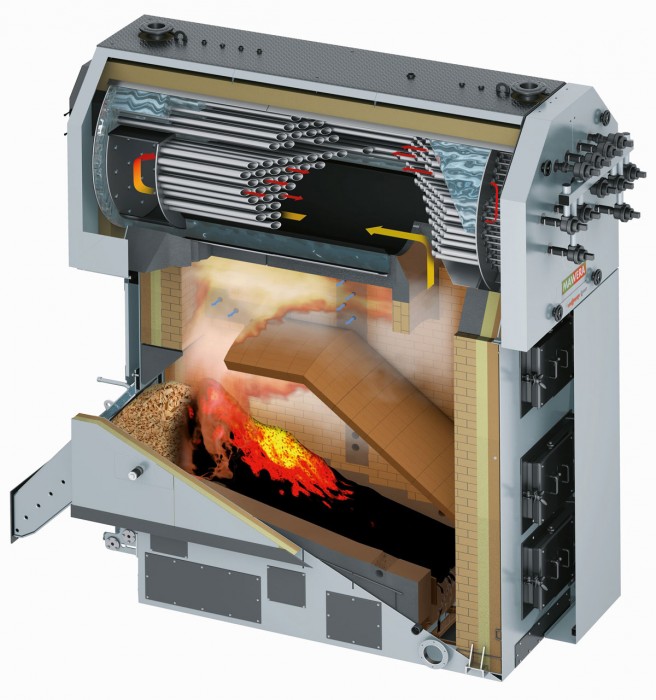
• Inspect for cracks. Their presence can contribute to the penetration of smoke and even carbon monoxide into the room. If any are found, minor repairs should be carried out immediately with a mixture of clay and sand. • Clean soot from all flues and chimney. Wipe dust from the inner walls with a dry rag, so as not to feel a bad aroma when kindling. In general, this procedure is desirable to perform 2-3 times a month.
• Pay attention to the doors, especially to their fit, the operability of the locking mechanisms, in order to avoid the appearance of smoke. • Choose the right quality fuel for your type of stove
• Properly equip storage areas for solid fuels.
During further operation, a number of simple rules should also be observed. The use of plastic, construction and household waste for kindling will lead to severe pollution of the furnace. It is wrong to open the blower and the oven door at the same time. It should be heated several times a day for one and a half to two hours, in order to avoid overheating. Dry, medium-sized, dust-free charcoal will provide excellent functionality.
Avoid storing flammable objects near hot walls. Do not leave the stove unattended during kindling, especially in homes where there are children.
Types of fuel for long-burning furnaces
Types of fuel for the pyrolysis furnace.
The well-known long-burning wood-burning stove is a fairly versatile unit and can work not only on chopped logs. There are quite a few energy carrier options that can be used in factory models of pyrolysis furnaces, not to mention home-made designs that work on almost everything. So, energy carrier options:
Stoves for a house on long-burning coal, along with wood-burning ones, are most often used. This is primarily due to the cost of fuel, although the difference in the end is not so significant. There are many factors that are out of our control. We will talk about this a little later, considering each of these energy carriers separately. They also read about how to make a long-burning furnace for mining.
Pellets for pyrolysis ovens are rarely used, they are mainly used in the furnace of classic solid fuel boilers. where there is a special tank with a metered fuel supply. Storing pellets requires more attention than the same firewood. When moisture gets on the pellets, they simply crumble, turning into an ordinary tyrsa. They are made from sawdust, straw, peat, waste paper or sunflower husks. There are white, gray and dark brown pellets, depending on the variety. The higher the grade, the lighter the fuel. Ash content also depends on the variety. In light pellets, it is only 0.5%, which is very small. Their specific heat of combustion is a maximum of 4300 kcal/kg.
Furnaces for a house on long-burning coal are very willing to work on briquettes. There are several types of briquettes:
- from waste wood;
- from coal;
- from peat;
- from the husk of a sunflower.
It is not necessary to burn long-burning solid fuel stoves with peat briquettes. The smell of smoke is so "fragrant" that neighbors may stop smiling when they meet. The stench of peat is on the whole yard.
Wood briquettes have a fairly low moisture content compared to firewood. It is no more than 10%. During combustion, 4400 kcal / kg of thermal energy is released.One briquette smolders for about four hours. Coal briquettes are compressed coal dust. When burned, they release 5200 kcal/kg of thermal energy and can smolder for up to 10 hours. Also, such products have a quite acceptable ash content, which is 28%.
With thermal energy, everything is simple - the more one kilogram of fuel releases heat, the better. But with the percentage of ash content, the opposite is true
The latter is of paramount importance for a long-burning solid fuel stove. What is ash content? These are impurities in solid fuels that do not burn and remain in the form of ash.
It not only falls into the collection tank, but also settles on the walls of the furnace and chimney. The normal limit of ash content of coal is from 1 to 15%, this is if non-combustible particles are dispersed in the organic structure of coal, the so-called internal ash.
If the particles are of inorganic origin, the so-called external ash, then the ash content of coal can reach 60%. Ash content is an indicator of the quality of the energy carrier. It affects not only the efficiency of fuel combustion, but also increases the transportation costs for delivery, as it is a useless, even harmful ballast. Indeed, because of these particles, coke is formed, which clogs long-burning coal-burning furnaces.
How to make an electric boiler for heating a house with your own hands so that it does not kill you with an electric current during operation?
About what function the stabilizer performs for an electric heating boiler is described here.
